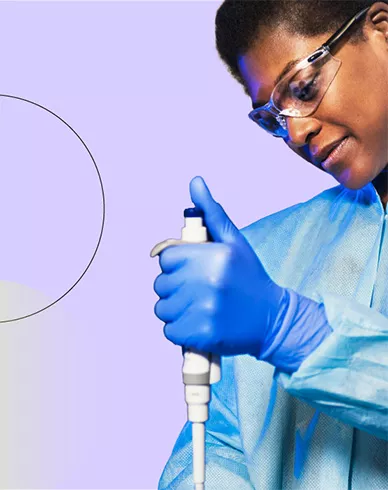
A data platform to handle anything

At a glance
A healthcare information exchange wanted to analyze its data faster and curate deeper insights. Together, Slalom and CRISP built an Azure Data Lake.
Impact
The results forever changed how CRISP serves its stakeholders—and its local community now benefits from some of the most reliable, insightful healthcare information in the US.
Key Technologies / Platforms
- Azure Data Lake
- Databricks
- Microsoft
Industry
Health tech
Key Services
A simple choice with powerful results
Sometimes, clients share feedback with Slalom that leaves us delighted and profoundly humbled. It usually speaks to a dazzling business transformation, the impressive ripple effect of technology, or powerful community impact. This story has all three—and it began with a simple choice. In early 2020, Chesapeake Regional Information Systems for our Patients (CRISP) chose Slalom to build an Azure Data Lake.
Data is CRISP’s mission
CRISP gets the right healthcare information to the right place at the right time, enabling patient-centered care and effective public health decisions. It’s the State of Maryland’s officially designated healthcare information exchange (HIE), a technology partner to HIEs in West Virginia and Connecticut, and a data provider to high-profile research institutions like Johns Hopkins.
Day to day, CRISP’s teams aggregate data from hundreds of providers and share it back, allowing healthcare information to move securely and safely. If you live in the Chesapeake region and want to exercise your right to see who’s accessed your medical records and when, CRISP will find that information. If a public health leader needs to identify patterns in opioid use, CRISP helps with that too.
Transforming operational data into analytical data
Like all HIEs, CRISP works with disparate data sources, a variety of data owners, and high-volume databases. Before the data lake, analyzing and reporting was a manual, time-consuming job, and working at scale and speed was a challenge.
Lindsey Ferris, program director of HIE projects at CRISP, explains, “We might have lab data coming in, immunization data, imaging data, or prescription drug monitoring program (PDMP) data, all in their own separate databases. We had an API layer and anytime somebody queried for it, the query went to the API, the API went and grabbed the data from the different sources and consolidated it and sent it back. For a patient-by-patient perspective we could get a complete picture. But when we wanted to ask questions that are more analytical like, ‘How many patients do we have that are Medicaid, have a prescription, and recently went to the hospital?’ those questions took a long time to answer.”
With one eye to PDMP data and the SUPPORT for Patients and Communities Act, Ferris began advocating for a modern analytics platform that could enable those metrics-driven questions on an ongoing basis. She envisioned a solution that could bring together CRISP’s multiple datasets, be relevant to helping understand the care of high-risk populations, and enable speedier insights.
Discovering a data lake
Slalom was introduced to CRISP by our partners at Microsoft. While the RFP called for a data warehouse, we proposed—and ultimately partnered with CRISP to deliver—an Azure Data Lake. The advantage of a data lake, says Phil Hetzel, a senior principal in Slalom DC, is that organizations aren’t tied to an enterprise view. They can start work with single use cases and deliver incremental value. CRISP could begin pulling data at terabyte scale almost immediately, have the flexibility to make changes in the future, and the long-term running cost would be sustainable.
Accelerating the build
At the beginning of the pandemic, the Maryland Department of Health reached out to CRISP with a request: Get us the demographic data we need to track COVID and proactively support our communities.
CRISP was eager to help. But work on the data lake hadn’t yet begun.
The reality for team members? Multiple spreadsheets, multiple handoffs. Twelve-hour days, seven days a week. CRISP’s leaders made the courageous decision to hold the PDMP use case, prioritize COVID, and accelerate Slalom’s delivery timeline. Our consultants were ready for the challenge—and the teamwork.
With Slalom DC’s Azure Data Platform Accelerator—which uses Databricks and other Azure services—the teams deployed the basic infrastructure speedily and put their energy straight into creating datasets. The big difference with using the accelerator, says Steve Dowling, senior consultant in Slalom DC, is that “we can take on the first use case and solve a problem right away while we’re also making the platform better and bigger and stronger.”
Says Hetzel, “We stood up the platform within three weeks. In weeks four to five, we rolled out the race and ethnicity use case. Since then it’s been an Agile partnership. Whatever is on the front burner for CRISP’s teams, we work on it.”
The new platform—CRISP Insights—easily handles datasets of 400+ billion records and 30+ unique data sources. It automatically masters any data the teams need and provides a single, clean file that can be used for analysis and reporting. And new data sources can be added to the platform in less than an hour.
The results for Maryland? CRISP was able to create a powerful, near real-time summary report of key COVID measures. It’s trended across time with the ability to break out demographics like race and ethnicity. Using this information, Maryland has been able to track the path of the pandemic in local communities, target the locations of new testing sites, and ultimately improve access for vulnerable communities.
“We can't thank the Slalom team enough for being bold and saying, ‘here’s the right technology for you,’” says CRISP Insights lead Andy Hanks. “If we’d gone with a data warehouse design, we could not have been as responsive to COVID.”
Speedy insights for public health issues
And the demographic use case was just the start. In the first 12 months, CRISP Insights has contributed to the following outcomes: hourly contact tracing with data already cross-referenced for individual risk factors, automated reporting on COVID hospitalizations, real-time ICU capacity sent directly to EMTs, tracking COVID-19 patterns in student populations for schools and universities, tracking the vaccine rollout progress, connecting MCOs in Maryland to vulnerable people who need to be prioritized for the vaccine, monitoring trends in the way COVID has impacted pregnancies . . . the list goes on and on.
CRISP and Slalom have also returned to the PDMP use case for the platform. CRISP Insights can help link prescriber, patient, and dosage data and create a flag for a physician to help identify high-risk individuals and ensure they get the right care.

Of course, there have been significant time and financial savings as a result of the platform, but more important to CRISP is a capacity to say yes more often to its stakeholders and support bigger public health questions. Its teams have the power to explore how different populations are affected by everything from overdoses and regular seasonal flu to pre-diabetes.
And they can do it with a speed and reach unmatched by other HIEs. CRISP’s executive director of Maryland Craig Behm offers the stunning example of a multimillion-person panel for a large insurance company: “The CRISP Insights team was able to set it up, configure it, link all the records, and push it out in three days. We calculated it would have taken the old engine 190 days just to run the master person matching.”
Ready for anything
The world of what’s possible for CRISP and its stakeholders is wide open. A data lake is no longer seen as something that’s “nice to have,” says Ferris. “It’s been adopted by everybody. And people think about CRISP Insights as core infrastructure. They understand the power that it has.”
Ferris hopes CRISP Insights will become a true public health utility for multiple HIEs across the country and allow CRISP to broaden its partnerships. Whatever’s next, the team is ready. “The sky’s the limit,” says Hanks. “It’s certainly not boring around here!”




